What is Eth staking?
Abstract: Eth Staking refers to the process of participating in the Ethereum network by holding and "staking" Ether (ETH) in a wallet to support operations such as block validation and transaction processing. In return for staking their funds, participants can receive rewards in the form of additional ETH.
Stake assets
Staking assets is a concept that has gained popularity in the world of cryptocurrency. It involves locking up a certain amount of a particular cryptocurrency in a wallet to participate in the validation of transactions and earn rewards. In the case of Ethereum, staking involves locking up Ether (ETH) in a smart contract to help secure the network and earn rewards in the form of additional Ether.
When you stake your assets, you are essentially helping to validate transactions on the blockchain by participating in the network's consensus mechanism. This process is known as proof of stake, which is a more energy-efficient alternative to the traditional proof of work consensus mechanism used by Bitcoin.
One of the key benefits of staking assets is the opportunity to earn passive income in the form of additional cryptocurrency. By staking your ETH, you can earn rewards in the form of more ETH, which can help you grow your investment over time.
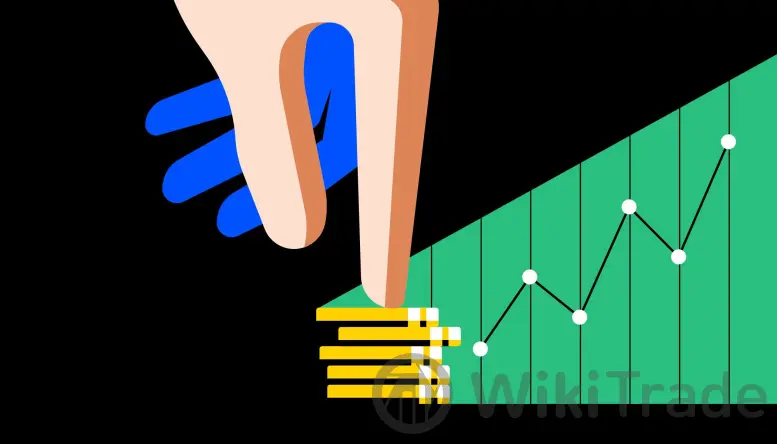
In addition to earning rewards, staking assets can also help to secure the network and contribute to its overall stability. Participating in the validation of maintaining the blockchain's integrity and preventing malicious actors from manipulating the network.
Staking assets is a relatively simple process that can be done through various platforms and wallets that support Ethereum staking. These platforms typically provide users with the tools and resources needed to stake their assets securely and earn rewards efficiently.
Overall, staking assets is a great way to earn passive income and contribute to the security and stability of the Ethereum network. It is a rewarding and potentially lucrative opportunity for cryptocurrency investors looking to grow their holdings and participate in the exciting world of blockchain technology.
What is eth staking?
Ethereum staking, also known as ParticipatingETH staking, is the process of participating in the Ethereum network by locking up a certain amount of ETH as collateral to support the network and earn rewards in return. This process is essential for the upcoming transition of Ethereum from a proof of work (PoW) to a proof of stake (PoS) consensus mechanism.
Staking assets:
To stake assets in the Ethereum network, users must lock up a minimum amount of 32 ETH in a smart contract known as a staking pool. This prevention is required to become a validator, a role that involves validating transactions and creating new blocks on the blockchain. Validators are responsible for securing the network and ensuring its smooth operation.
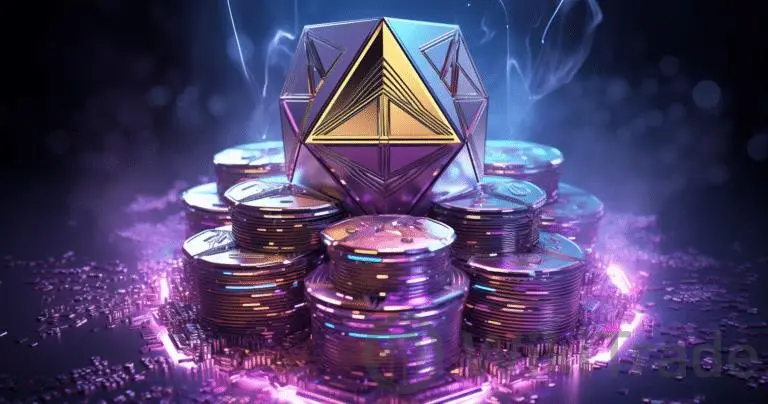
What is Ethereum 2:
Ethereum 2, also known as ETH 2.0 or Serenity, is the next major upgrade to the Ethereum network. This upgrade will transition Ethereum from a PoW consensus mechanism to a PoS mechanism, improving scalability, security, and sustainability. Ethereum 2 will introduce features such as shared chains, enabling the network to process more transactions more efficiently.
What is proof of stake:
Proof of stake is a consensus mechanism used in blockchain networks to achieve distributed consensus and validate transactions. In a PoS system, validators are chosen based on the number of coins they hold and are incentivized to act honestly by earning rewards. PoS is considered to be more energy-efficient and secure than PoW, as it does not require extensive computational power.
Earn crypto:
By participating in Ethereum staking, users can earn rewards in the form of additional ETH. These rewards are distributed to validators based on their staked ETH and the length of time they have been actively validating transactions. Staking ETH can be a profitable way to earn passive income and contribute to the security and decentralization of the Ethereum network.
Ether proof of stake:
Ether proof of stake, or Eth2, is the new consensus mechanism that will be implemented in Ethereum 2. It will replace the current proof of work system and enable users to stake their ETH and participate in the validation of transactions. Eth2 aims to improve the speed, scalability, and security of the Ethereum network while reducing its environmental impact.
Free Ethereum:
Some platforms offer the opportunity to stake ETH for free, allowing users to earn rewards without the need to invest their funds. These platforms typically use a portion of their revenue to fund staking pools and distribute rewards to participants. Staking ETH for free can be a risk-free way to earn passive income in the cryptocurrency market.

How to buy Eth:
To buy ETH, users can use cryptocurrency exchanges such as Coinbase, Binance, or Kraken. They can also purchase ETH directly from other users through peer-to-peer platforms like LocalBitcoins or Paxful. Once they have acquired ETH, users can transfer it to a staking pool to start earning rewards through Ethereum staking.
Best staking crypto:
Ethereum is considered one of the best cryptocurrencies for staking due to its large user base, high liquidity, and strong development community. Other popular staking cryptos include Cardano, Polkadot, and Tezos. These cryptocurrencies offer competitive staking rewards and have a strong track record of security and reliability.
RPL token:
RPL token is the native token of the Rocket Pool platform, a decentralized Ethereum staking network. Rocket Pool allows users to stake their ETH and earn rewards without the need to run their validator node. RPL tokens are used to incentivize participants to contribute to the network and receive a share of the staking rewards.
What is Ethereum 2
Ethereum 2, also known as ETH 2.0, is the upcoming upgrade to the Ethereum blockchain. It is a major overhaul that aims to address some of the scalability and security issues that have plagued the original Ethereum network.
| Aspect | Description | Source |
| What is Staking? | Staking is depositing 32 ETH to activate validator software, responsible for processing transactions and securing the Ethereum network. | ethereum.org |
| Total ETH Staked | As of the latest update, 31,258,639 ETH have been staked. | ethereum.org |
| Total Validators | There are currently 977,968 validators participating in the network. | ethereum.org |
| Current APR | The current annual percentage rate (APR) for staking rewards is 3.7%. | ethereum.org |
| Rewards | Validators earn rewards for batching transactions into new blocks and maintaining the blockchain‘s security. | ethereum.org |
| Security | More staked ETH strengthens the network against attacks, requiring more ETH to control a majority of the network. | ethereum.org |
| Sustainability | Staking nodes can run on modest hardware using very little energy, contributing to Ethereum’s sustainability. | ethereum.org |
| How to Stake | Options vary depending on the amount of ETH; one can stake solo or use staking services. | ethereum.orghttps://www.youtube.com/watch?v=rj7-sE6H-Hs |
One of the key changes in Ethereum 2 is the transition from the current proof-of-work consensus mechanism to a proof-of-stake consensus mechanism. This means that instead of miners competing to solve complex mathematical puzzles to validate transactions and create new blocks, val? tors will be selected to propose and validate blocks based on the amount of Ether they hold and are willing to “stake” as collateral.
This transition to proof of stake is expected to bring several benefits to the Ethereum network. Firstly, it will significantly reduce the energy consumption of the network, as proof of stake is much more energy-efficient than proof of work. This will make Ethereum more sustainable and environmentally friendly.
Secondly, proof of stake is designed to improve the security and decentralization of the network. Validators who act maliciously or try to cheat the system can have their staked Ether slashed as a penalty, incentivizing honest behavior and discouraging attacks.
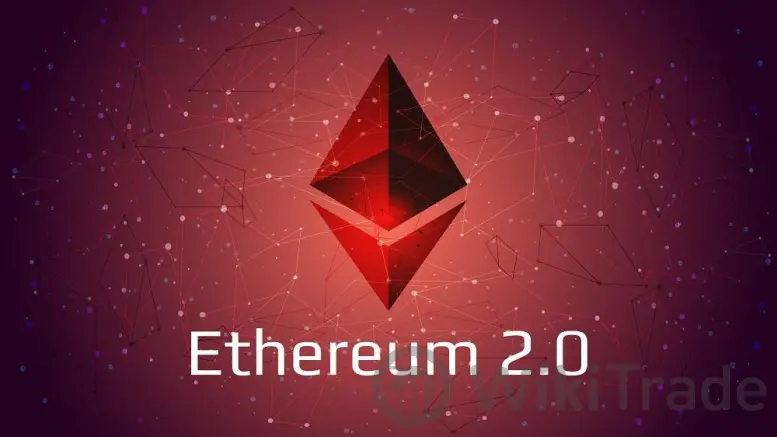
Moreover, the shift to proof of stake will also introduce new opportunities for Ethereum holders to earn passive income by participating in the staking process. By staking their Ether, users can earn rewards in the form of additional Ether for helping to secure the network and validate transactions.
In addition to these changes, Ethereum 2 will also introduce improvements to the network's scalability through the implementation of shard chains. These shard chains will help to increase the transaction processing capacity of the network by dividing the workload across multiple smaller chains, allowing Ethereum to handle a larger number of transactions more efficiently.
Overall, Ethereum 2 represents a significant upgrade to the Ethereum network that aims to address some of the key challenges facing the platform and pave the way for a more scalable, secure, and sustainable blockchain ecosystem.
What is proof of stake?
Proof of stake (PoS) is a consensus algorithm used in blockchain networks to achieve distributed consensus. In a PoS system, validators are chosen to create new blocks and validate transactions based on the number of coins they hold and are willing to ‘stake’. The concept of staking involves locking up a certain amount of cryptocurrency as collateral to support network operations and earn rewards.
In a PoS system, validators are selected to create new blocks and validate transactions based on their stake in the network. The more coins a validator has, the greater the chance they have of being chosen to create the next block. This is because validators with more coins at stake are deemed to have a higher vested interest in the network's security and are therefore more likely to act in its best interests.

One key advantage of PoS over traditional proof of work (PoW) systems is that it is more energy-efficient. PoW systems, such as the one used in Bitcoin, require miners to solve complex mathematical puzzles to validate transactions and create new blocks. This process consumes a significant amount of computational power and energy. In contrast, PoS systems rely on validators who are chosen based on the amount of cryptocurrency they hold and are willing to stake, rather than computational power.
By staking their coins, validators can earn rewards in the form of additional cryptocurrency. These rewards incentivize validators to act honestly and maintain the network's security. In addition to earning rewards, validators may also be penalized for acting dishonestly or attempting to manipulate the network. This helps to deter malicious actors and ensure the integrity of the network.
Overall, PoS is a more sustainable and environmentally friendly consensus algorithm compared to PoW. It allows for greater participation in the network and provides incentives for validators to support network operations and maintain its security. As blockchain technology continues to evolve, PoS is becoming an increasingly popular choicecanryptocurrency projects seek a more efficient and secure consensus mechanism.
Earn crypto
Earn crypto refers to the process of earning cryptocurrencies by participating in various activities within the blockchain ecosystem. One popular way to earn crypto is through staking. Staking involves holding a certain amount of period cryptocurrency in a designated wallet for a specified period to support the network and validate transactions. In return for staking their assets, participants are rewarded with additional cryptocurrency as an incentive for their contribution.
Ethereum, a popular cryptocurrency, recently transitioned to a proof-of-stake consensus mechanism with the launch of Ethereum 2.0. This transition allows users to stake their Ether (ETH) to secure the network and earn rewards. By staking ETH, participants can earn a passive income in the form of more Ether tokens.
Ethereum staking offers several benefits to participants. One key advantage is the potential for higher returns compared to traditional investment options. Staking can provide a steady stream of income over time, making it an attractive option for investors looking to diversify their portfolios. Additionally, staking helps to decentralize the network and ensure its security users actively participate in the validation process.

To start earning crypto through staking, users must first acquire Ether tokens. There are several ways to buy ETH, including through cryptocurrency exchanges, peer-to-peer platforms, and decentralized finance (DeFi) protocols. Once users have acquired ETH, they can then transfer it to a compatible staking platform or wallet to begin staking their assets.
When choosing a staking platform, users should consider factors such as the platform's reputation, security measures, and staking rewards. It is important to do thorough research and select a reputable platform to ensure the safety of your investments. Additionally, users should be aware of the risks associated with staking, such as potential price volatility and network disruptions.
earning crypto through staking can be a profitable and rewarding experience for participants. By actively contributing to the network and securing the blockchain, users can earn passive income and support the growth of the cryptocurrency ecosystem. Staking is a valuable tool for investors looking to earn crypto in a sustainable and decentralized manner.
Ether proof of stake
Ether proof of stake is a consensus mechanism that is being implemented in the Ethereum network as part of the Ethereum 2 upgrade. In the current proof-of-work system, miners are required to solve complex mathematical puzzles to validate transactions and secure the network. However, this process is energy-intensive and can lead to centralization of power among a small number of miners.
In contrast, proof of stake allows users to validate transactions and create new blocks based on the number of coins they hold, or stake, in the network. This means that those with a larger stake have a higher chance of being chosen to create new blocks and earn rewards.
One of the key benefits of Ether proof of stake is that it is more energy-efficient than proof of work, as it does not require expensive hardware and large amounts of electricity to validate transactions. This can help reduce the environmental impact of cryptocurrency mining and make the network more sustainable in the long term.

Additionally, Ether proof of stake helps to promote decentralization in the network by giving more power to users who hold a stake in the network. This can help prevent the centralization of power among a small number of miners and make the network more secure and resilient.
To participate in Ether proof of stake, users can stake their Ether tokens in a staking pool or run their validator node. By staking their tokens, users can earn rewards in the form of additional Ether for helping to validate transactions and secure the network.
So Ether proof of stake is a promising new consensus mechanism that has the potential to make the Ethereum network more efficient, sustainable, and decentralized. It is an important step forward in the evolution of blockchain technology and has the potential to revolutionize the way we think about validating transactions and securing networks.
Free eththetheeum
Free Ethereum refers to the concept of earning ethEthereumkens without having to purchase them directly. This can be achieved through various methods such as participating in airdrops, completing tasks on decentralized applications (dApps), or engaging in activities like staking.
One common way to earn free Ethereum is through airdrops, which involves receiving free tokens by simply holding a certaEthereumt of Ethereum in your wallet. Projects often distribute free tokens to Ethereum holders as a way to increase adoption and awareness of their platform.
Another way to earn free ethereum is by participating in decentralized applications that offer rewards for completing tasks or providing liquidity. For example, some dApps may offer users the chance to earn ethereum by staking their tokens or providing liquidity to a decentralized exchange.
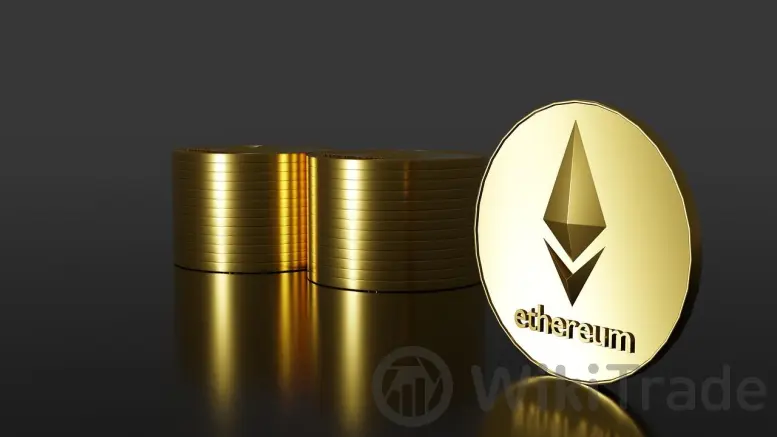
Additionally, staking is another popular method for earning free Ethereum. Staking involves locking up a certain amount of Ethereum in a smart contract to support the network and earn rewards in return. By staking Ethereum, users can earn a passive income in the form of additional tokens.
It's important to Ethereum while earning free Ethereum can be a lucrative opportunity, it also comes with risks. Users should be cautious of scams and fraudulent schemes that promise free Ethereum in exchange for personal information or upfront payments.
In conclusion, free Ethereum offers an exciting opportunity for users to earn tokens without having to make a direct investment. By participating in airdrops, engaging with dApps, or staking their Ethereum, users can accumulate tokens and potentially increase their holdings over time. However, it's essential to exercise caution and conduct thorough research before engaging in any activities that promise freEthereumum.
How to buy eth
Ethereum, being one of the most popular cryptocurrencies in the world, can be purchased through various methods. Here is a step-by-step guide on how to buy Ethereum:
Choose a reliable cryptocurrency exchange: Before buying Ethereum, you need to find a reputable cryptocurrency exchange that supports Ethereum transactions. Some popular exchanges include Coinbase, Binance, Kraken, and Bitfinex.
Create an account: Once you have selected an exchange, you will need to create an account by providing your email address, creating a password, and completing the required verification process.
Deposit funds: After your account is verified, you can deposit funds into your exchange account. Most exchanges accept deposits via bank transfer, credit card, or cryptocurrency deposits.

Buy Ethereum: Once you have funds in your account, you can proceed to buy Ethereum. Simply navigate to the trading section of the exchange, select Ethereum (ETH) as the asset you want to purchase, enter the amount you wish to buy, and click on the “Buy” button.
Store your Ethereum: After purchasing Ethereum, it is essential to transfer your coins to a secure wallet. You can choose from hardware wallets, software wallets, or online wallets to store your Ethereum safely.
Monitor the market: The cryptocurrency market is highly volatile, so it is crucial to keep track of Ethereum's price movements. You can use various tools and platforms to monitor the market and make informed decisions about buying or selling Ethereum.
Secure your investment: To protect your investment, make sure to use strong passwords, enable two-factor authentication, and keep your private keys secure. Additionally, consider diversifying your portfolio to reduce risk.
By following these steps, you can successfully buy Ethereum and start participating in the world of cryptocurrencies. Remember to conduct thorough research and stay informed about market trends to make informed investment decisions.
Best staking crypto
Best staking crypto refers to the top cryptocurrencies that offer staking opportunities for users to earn rewards by participating in the network. Staking is a process where users lock up a certain amount of their cryptocurrency holdings to support the network's operations and earn rewards in return. It is a way to contribute to the security and decentralization of the blockchain while earning a passive income.
One of the best staking cryptos currently is Ethereum (ETH). With the upcoming Ethereum 2.0 upgrade, Ethereum will transition from a consensus mechanism to a proof of stake mechanism. This means that users will be able to stake their ETH holdings to help secure the network and earn rewards. Staking ETH will involve locking up a certain amount of ETH in a smart contract for a specific period, and in return, users will receive staking rewards in the form of newly minted ETH.
Another popular staking cryptocurrency is Tezos (XTZ). Tezos is a blockchain platform that uses a proof of stake consensus mechanism. Users can delegate their XTZ holdings to a validator and earn rewards for participating in the network. Tezos also allows users to vote on protocol upgrades and governance decisions, making it a truly decentralized platform.
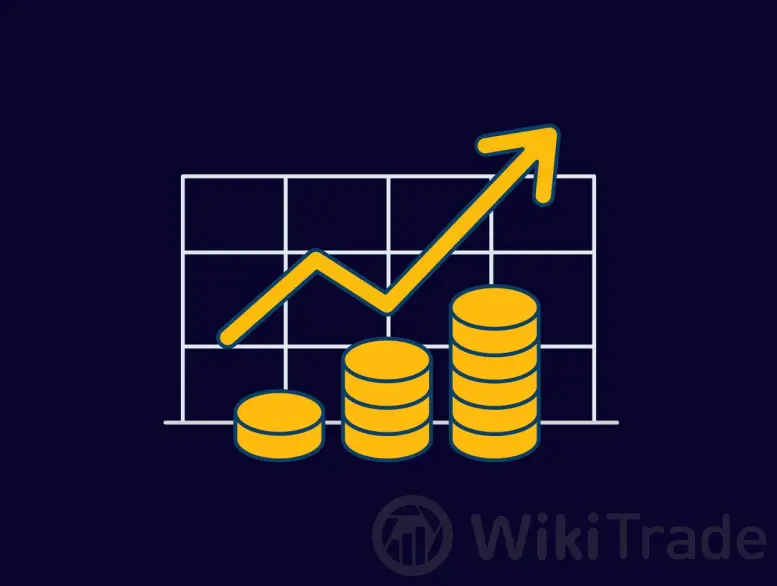
Cosmos (ATOM) is another top-staking cryptocurrency that offers users the opportunity to participate in the network and earn rewards by staking their ATOM holdings. Cosmos uses a delegated proof of stake consensus mechanism where users can delegate their ATOM holdings to validators and earn staking rewards.
Cardano (ADA) is also a popular staking cryptocurrency that uses a proof of stake consensus mechanism. Users can stake their ADA holdings to help secure the network and earn rewards. Cardano has a strong focus on scalability, security, and sustainability, making it a promising staking cryptocurrency for the future.
In conclusion, staking cryptocurrencies allows users to earn passive income by participating in the network and contributing to its security and decentralization. Ethereum, Tezos, Cosmos, and Cardano are among the best staking cryptos currently available, offering users the chance to earn rewards while supporting their respective blockchain networks. Staking has become a popular way for crypto holders to earn passive income and contribute to the growth of the blockchain ecosystem.
RPL token
RPL token, also known as Rocket Pool token, is a native utility token on the Rocket Pool platform. Rocket Pool is a decentralized Ethereum staking network that allows individuals and businesses to stake their Ethereum (ETH) while earning rewards.
RPL tokens play a critical role in the Rocket Pool ecosystem. They are used for various functions such as governance, staking, and security. Holders of RPL tokens have the power to vote on important decisions related to the platform, such as protocol upgrades and changes.

In terms of staking, RPL tokens are required as collateral to participate in the Rocket Pool network. Users must deposit a certain amount of RPL tokens stalker to become a stalker and earn rewards. The more RPL tokens a user stakes, the higher their potential rewards will be.
RPL tokens are used to ensure the security of the Rocket Pool network. Stakers who hold RPL tokens are incentivized to act honestly and securely validate transactions on the platform. In the event of malicious behavior, sta stalkersstalkerssk lose their RPL tokens as a penalty.
RPL tokens provide a valuable incentive for users to actively participate in the Rocket Pool network and contribute to the security and decentralization of the Ethereum blockchain. As the platform continues to grow and gain popularity, the demand for RPL tokens is expected to increase, making them a valuable asset for stalkers and investors alike.
FAQ on ETH Staking
What is the minimum amount of ETH required for staking?
The minimum amount of ETH required for staking varies depending on the staking platform or protocol being used. In general, most staking platforms require a minimum of 32 ETH to participate in the Ethereum 2.0 staking process. This minimum requirement is set by the Ethereum network itself as a way to ensure that stalkers have a significant stake in the network and are incentivized to act in its best interests.
Staking less than the minimum amount of ETH may not be cost-effective, as stalkers may not receive significant rewards tstalkersstalkersloseontributions to the network. Additionally, some staking platforms may have their minimum requirements for staking, which could be higher or lower than the Ethereum network's minimum. It is important for potential stalkers to carefully research and understand the requirements of each staking platform before participating in ETH staking.
How does staking help secure the Ethereum network?
Staking helps secure the Ethereum network by incentivizing validators to act honestly and follow the rules. Validators are required to deposit a certain amount of ETH as stake, and are then responsible for processing transactions and creating new blocks in a process known as forging. To participate in staking, validators must also run a node and actively participate in reaching consensus on the blockchain.
By requiring validators to have a financial stake in the network, staking encourages them to act in the best interest of the network. Validators who attempt to cheat or act maliciously risk losing their staked ETH, providing a strong economic incentive for them to operate honestly. This helps to maintain the integrity and security of the blockchain, as validators are financially invested in its success and are motivated to protect it from attacks and malicious actors. In essence, staking helps to create a secure and decentralized network by aligning the incentives of validators with the overall health of the Ethereum ecosystem.
What are the risks involved in ETH staking?
There are several risks involved in ETH staking that investors should be aware of. The first risk is the potential for slashing, which is a penalty imposed on validators for malicious behavior. Validators may lose a portion of their staked ETH if they act in ways that harm the network. Another risk is the volatility of the cryptocurrency market, which can impact the value of staked ETH. Additionally, there is the risk of technical issues or bugs in the staking platform, which could result in losses for validators. It is important for investors to carefully consider these risks before participating in ETH staking.
How can I choose the best staking platform?
When choosing the best staking platform for ETH, there are several factors to consider. Firstly, you should look for a platform that is reputable and has a strong track record of security and reliability. It's important to research the platform's history and read reviews from other users to ensure that your assets will be safe.
Another important consideration is the fees associated with staking on the platform. Different platforms may have varying fee structures, so it's important to compare and choose one that aligns with your investment goals.
Additionally, you should consider the user experience and interface of the platform. A user-friendly platform will make it easier for you to stake your ETH and monitor your rewards.
Lastly, it's important to consider the returns offered by the platform. Look for a platform that offers competitive returns on your staked ETH to maximize your earnings. Ultimately, the best staking platform for you will depend on your individual preferences and investment goals.
Can I unstake my ETH at any time?
One of the key benefits of ETH staking is the flexibility it offers to participants. Unlike traditional investment vehicles where funds are locked in for a specific period, staking allows users to unstake their ETH at any time. This means that you have the freedom to withdraw your staked assets whenever you want without any restrictions.
However, it is important to note that there may be certain conditions or requirements imposed by the staking platform or network. For example, some platforms may have a waiting period before you can unstake your ETH, while others may charge a fee for early unstaking. It is recommended to carefully read and understand the terms and conditions of the staking platform before staking your ETH to avoid any surprises when it comes time to unstake your assets.
Overall, the ability to unstakunstackETH at any time provides added flexibility and control over your staked assets, allowing you to make informed decisions based on your individual financial goals and risk tolerance.




Top News
 WikiTrade
WikiTrade WikiTrade
WikiTrade WikiTrade
WikiTrade WikiTrade
WikiTrade WikiTrade
WikiTrade WikiTrade
WikiTrade WikiTrade
WikiTrade WikiTrade
WikiTrade WikiTrade
WikiTrade WikiTrade
WikiTrade


